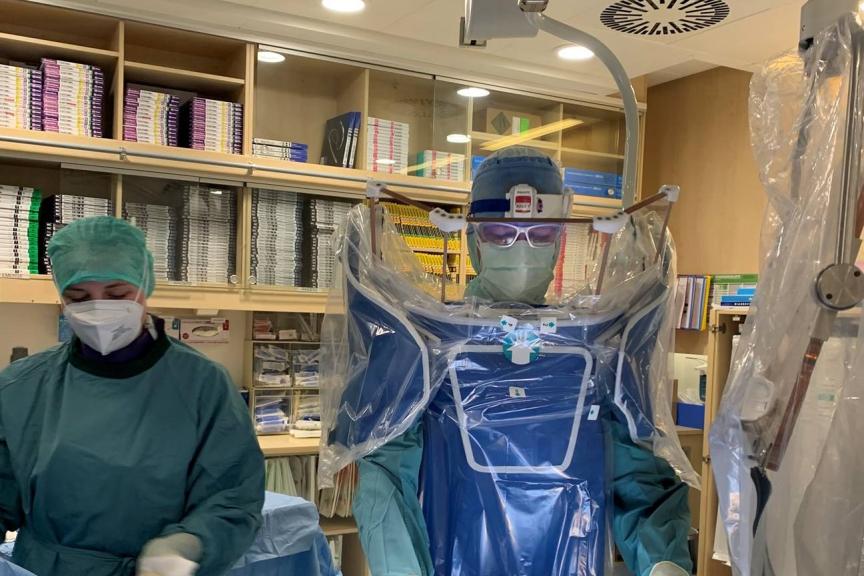Remote Patient Monitoring With Alert Based Care Is the Future for Managing Cied Patients
A contribution by David Hayes, MD, Chief Medical Officer at BIOTRONIK Inc.

What does the future of remote cardiac care look like? Leading medical experts from five countries discussed this question and trends in remote care at the roundtable organized by BIOTRONIK at the annual congress of the European Heart Rhythm Association. Through these discussions, it became evident that remote patient monitoring with alert-based care is the way forward; however, there are still practical obstacles to overcome.
We all witnessed how the COVID-19 pandemic has accelerated digital innovation around the globe, particularly in digital health and telemedicine. Recent data also indicate an increase in remote monitoring for CIED patients during the pandemic. During the roundtable discussion in Barcelona, the importance of a balanced approach to patient monitoring was emphasized, where patients are continuously monitored remotely but seen in-person when necessary1,2.
A Game-Changer for Patients & Clinicians
The TRUST study has shown that remote patient management with automatic connectivity and alert-based care can improve clinic workflow by reducing non-actionable in-person evaluations and preserving the discovery of at-risk patients without scheduled on-site evaluations. Moreover, recent data suggest in-person CIED evaluations could be safely postponed to every two years when daily digital connectivity is maintained3,4. Alert-based remote patient monitoring is a form of digital patient monitoring employing automated systems to monitor patients remotely and to alert care teams as required. This form of care has the potential to replace structured intermittent device follow-up (in-person or remote), optimize clinic visits for actionable events and decrease healthcare costs.3-6
There Are Still a Few Hurdles to Overcome Before Alert-Based Remote Monitoring Can Be Introduced Across the Board
It was agreed that transitioning to alert-based remote monitoring is a major step which can potentially improve patient outcomes and clinical workflow. However, moving to alert-based care would also require supporting clinics to redesign workflow processes, ensure appropriate reimbursement, and provide patient interaction mechanisms. Clinicians may need to mindfully choose the suitable monitoring method for their patients before device implantation since not all remote monitoring systems can successfully realize alert-based care. On the other hand, patient engagement was seen as an important topic in moving to alert-based remote monitoring without in-clinic follow-ups, particularly in the phases after implantation. It is also important for patients to understand that having less in-person visits with their device doctor does not mean they are being abandoned. Instead, remote monitoring can facilitate their care, allowing the care team to focus on other critical aspects of the patient's health.
We Continue to Engage With Healthcare Professionals to Advance Digital Healthcare
As the leading company in remote monitoring, BIOTRONIK is committed to working towards better care equity for patients living with CIEDs for example trough Home Monitoring. We are looking forward to our next expert meeting at the upcoming Heart Rhythm Society conference in New Orleans, where we will continue to discuss the future of alert-based care. We are curious about what the future holds for this approach to patient monitoring and are excited to work with our partners to ensure that patients receive the best possible care.
References:
1. Varma, Niraj, et al. J Am Coll Cardiol EP. 2021 Aug, 7 (8) 976–987
2. Varma, Niraj, et al. J Am Coll Cardiol. 2020 Sep, 76 (11) 1363–1374.
3. Watanabe E., Yamazaki F., Goto T., et al. Circ Arrhythm Electrophysiol 2020;13:e007734.
4. García-Fernández, Francisco Javier, et al., European Heart Journal 40.23 (2019): 1837-1846
5 Varma, Niraj, et al. Circulation 122.4 (2010): 325-332.
6. Chew, Derek S., et al. Heart Rhythm (2022).




















